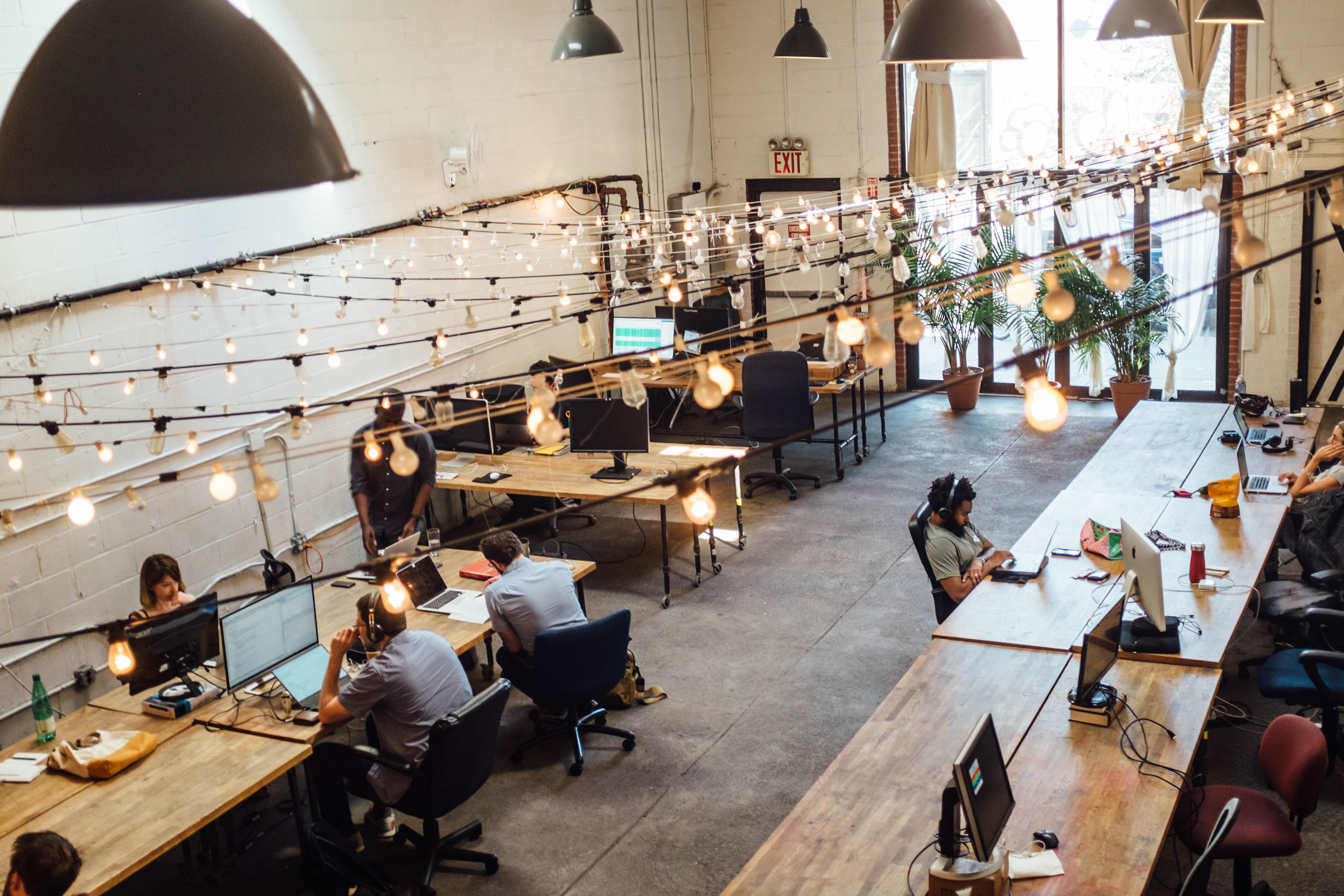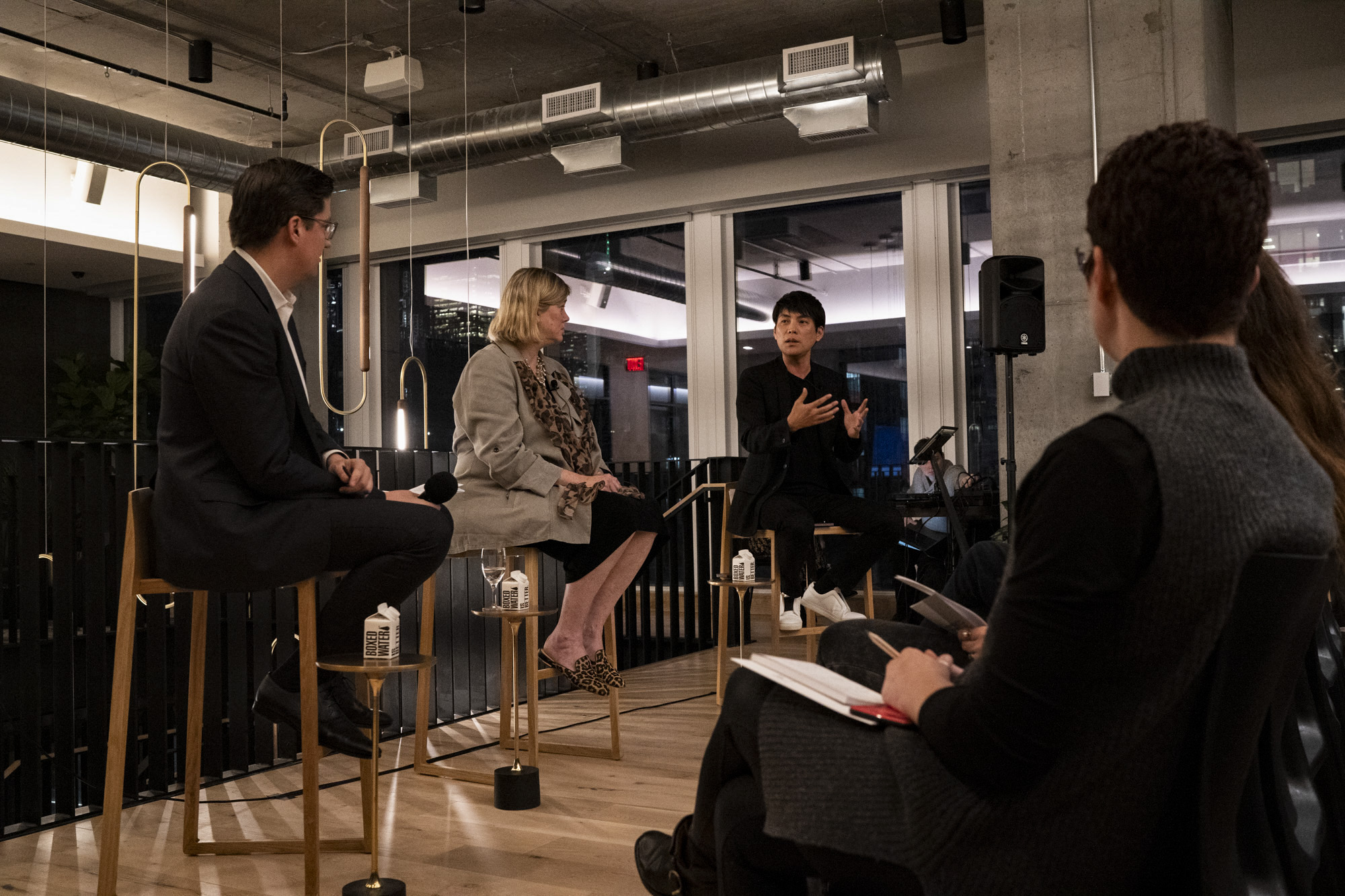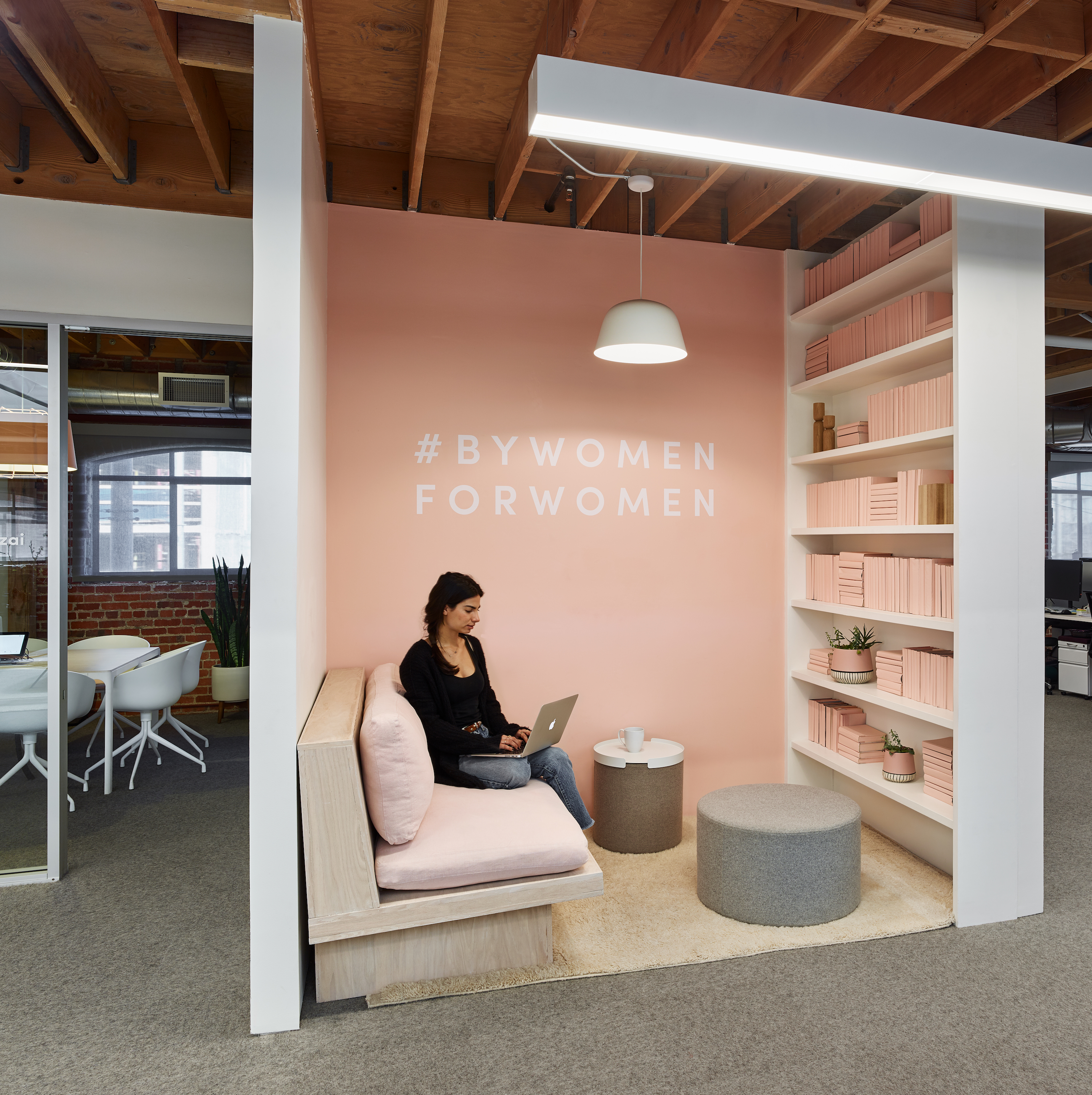Machine intelligence is changing all aspects of our lives, including the workplace. One founder explores how human-machine integration will shape the future of work.
What will the ideal workspace look in like in 10, 15, or even 20 years from now? With the accelerated pace of today’s technological innovations, it seems impossible to imagine, yet that is exactly what researcher and designer Jennifer Magnolfi is working to envision.
In the second episode of ROOM’s “The Workplace of Tomorrow” podcast series, produced in partnership with The Slowdown, Magnolfi reveals what the future workplace needs to succeed and gain a competitive advantage. At its core, she says, is seamless human-machine integration.
Designing for the future
As the founder of Programmable Habitats, an R&D consulting practice that specializes in the development of high-tech work environments of the future, Magnolfi is working on projects that won’t materialize for years—or even a decade. Because technology advances so quickly—far more rapidly than the speed of architecture, which moves at a glacial pace in comparison—Magnolfi is working to answer the difficult question of: “How do we make sure what we’re building will still be relevant five or 10 years down the road?”
To help uncover the vision of the future workplace, Magnolfi studies what she calls “lead users,” people who use innovative technology in ways that the average user does not. Who are these people? In her early work, Magnolfi studied extreme working conditions—astronauts, mission control rooms, and submarines—where users must be extremely adept at manipulating technology, and where the technology systems constitute the habitat itself. Her pool of lead users also includes teenagers, who will soon have the biggest—and the most tech-savvy—presence in the workforce of the future.
“The challenge for businesses—and I think this is the real structural shift for us today—is the ability to unlock the potential of machine intelligence,” says Magnolfi. “Businesses today that are thinking about how they’re going to compete and stay relevant 15, 20 years down the road are going to have to understand how to unlock human-machine collaboration for their business, for their customers, and for their own values. That takes multiple different shapes, forms, and sizes.”
Unleashing the human potential
As we see through even the most advanced submarines and aircraft, AI still requires the human ability to manipulate the machinery, integrate it, understand it, and program it. As technology charges forward and we strive for this balance of man and machine, we need to cultivate the different dimensions that in fact make us human. Says Magnolfi, “We need to create environments that foster the learning—and really, the development—of human capital. So, it’s not just the frontiers of machine work, but it’s really the frontiers of human work.”
At the centerpiece of the new workplace is programmability that integrates machine and human needs from the very start of a new building project. “It starts with the technology systems in a building, whether it’s energy management, fire protection, safety, or the actual fabric and material—the walls, the interior partitions, the furniture itself—[there is] the capacity of being able to connect all of these things in various different ways for various different purposes.” The net result is an environment that feels programmable and, in many cases, can be controlled and designed to perform as a programmable space.
Going beyond adaptability
Nevertheless, Magnolfi believes it’s still too early to begin to envision the canonical design principles of the future beyond the expected ones, which leads her to conceive spaces that go further than typical “flexible” offices and are almost supercharged for adaptability. “Designing an environment for maximizing adaptation where the user can be a co-designer, where time-to-change would be ideally zero, where you create a context where you’re literally housing a network of both humans and machines collaborating,” she says. “These are what I, in my work, consider state-of-facts environments. You can’t really design for future workspace unless you integrate those. But when it comes to more fine-tuning of design principles, I think it’s still quite early.”
Predicting the future, Magnolfi sees the workspace evolution in two forms: “One is distributed like a corporate campus deeply integrated in the urban fabric that won’t be highly distinguishable from a network of coworking spaces—but it will be governed and owned by one entity. Or [we’ll see] the opposite: places that are idyllic, in nature, connected by virtue of the fact that today we are connected globally and can be working anywhere. But spaces that emphasize those aspects of nature and solitude, the ability to think and the ability to slow down time are more difficult to find in an urban context.”
Head here to listen to Magnolfi’s full interview on The Workspace of Tomorrow, a brand new podcast by ROOM.


